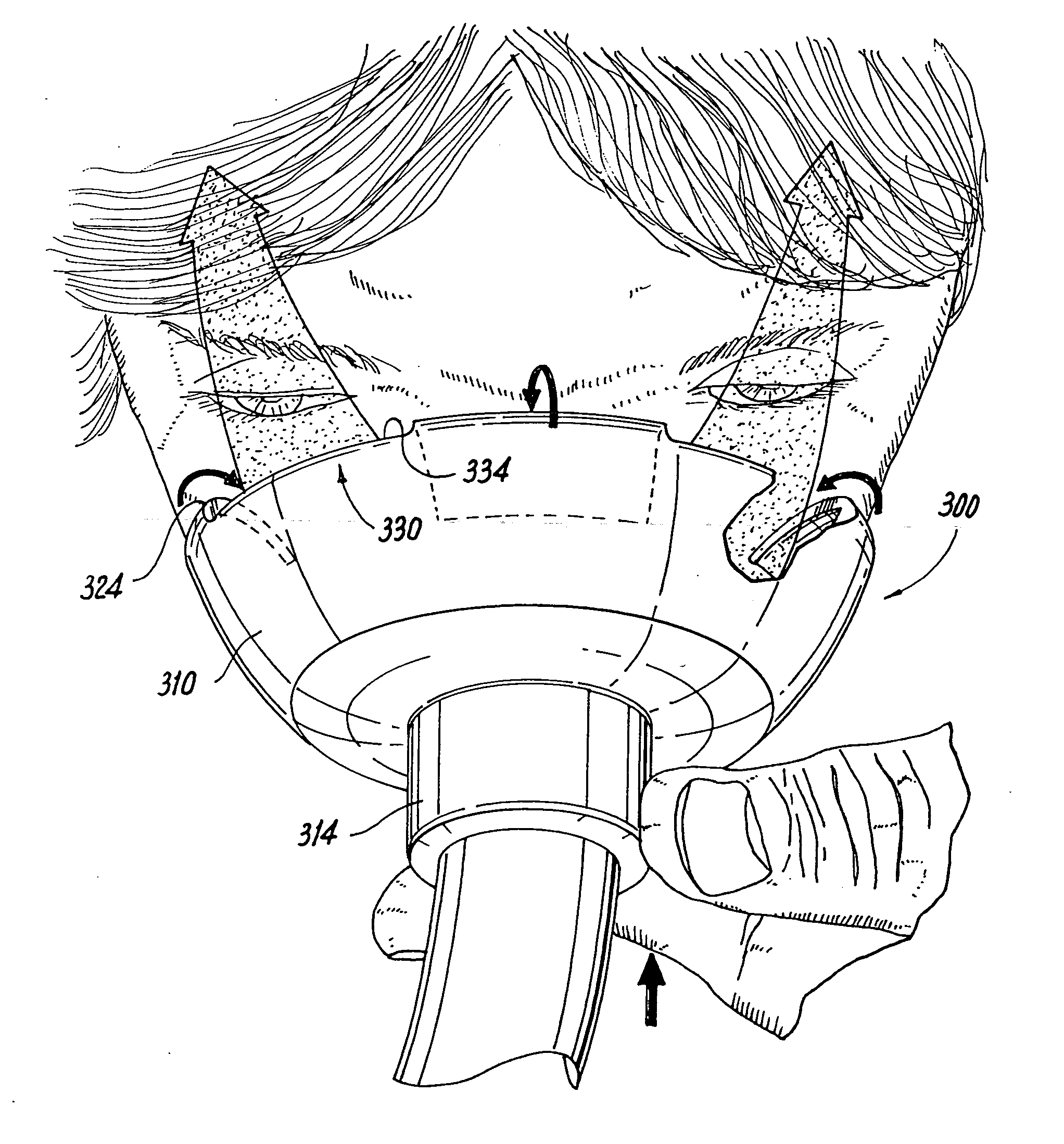Face mask for use in pressurized drug delivery systems
a technology for delivering systems and drugs, applied in the field of masks, can solve the problems of increased facial deposition of drugs, and potential local side effects, and achieve the effects of reducing the inertia of aerosolized drugs, and reducing the amount of aerosolized drugs
- Summary
- Abstract
- Description
- Claims
- Application Information
AI Technical Summary
Benefits of technology
Problems solved by technology
Method used
Image
Examples
example 1
[0082] A face mask as shown in FIGS. 3-5 according to the first embodiment was constructed and has the following dimensions. An outer diameter of the mask body 310 is about 77 mm and an outer diameter of the flange 314 being about 20 mm. The second opening 320 has a diameter of about 46 mm. As will be appreciated by viewing the figures, the eye vents 330 have a tapered construction in that a width thereof is greatest at the inner edge 334 and is less where the eye vent 330 communicates with the second opening 320. According to one embodiment, the width of the eye vent 330 at the inner edge 334 is about 20 mm and then it tapers to a diameter of about 10 mm where the vent opening 330 communicates with the second opening 320. The depth of the eye vent 330 as measured from the inner edge 334 to the bottommost portion 324 is about 9 mm in the relaxed state shown in FIGS. 3-4 and when applied to the face during administration of the drug, the depth decreases to about 5 mm.
example 2
[0083] A face mask as shown in FIGS. 6-8 according to the first embodiment was constructed and has the following dimensions. The face mask has the same dimensions as set forth in Example 1 above with the following exceptions. The depth of the eye vent 330 as measured from the inner edge 334 to the bottommost portion 324 is about 27 mm in the relaxed state shown in FIGS. 3-4 and when applied to the face during administration of the drug, the depth decreases to about 17 mm.
[0084] It will be appreciated that during application, the depth of the eye vent 330 or eye vents 340 in the embodiment in FIGS. 9-11 decreases any where from about 30% to 70% relative to its original depth, and according to one embodiment. In another embodiment, the depth decreases from about 40% to about 60% of its original depth, e.g., about 50%.
[0085] The present applicant has determined that the major determinant of facial deposition during inhalation of aerosolized drug using a pressurized wet nebulizer syst...
PUM
 Login to View More
Login to View More Abstract
Description
Claims
Application Information
 Login to View More
Login to View More - R&D
- Intellectual Property
- Life Sciences
- Materials
- Tech Scout
- Unparalleled Data Quality
- Higher Quality Content
- 60% Fewer Hallucinations
Browse by: Latest US Patents, China's latest patents, Technical Efficacy Thesaurus, Application Domain, Technology Topic, Popular Technical Reports.
© 2025 PatSnap. All rights reserved.Legal|Privacy policy|Modern Slavery Act Transparency Statement|Sitemap|About US| Contact US: help@patsnap.com



